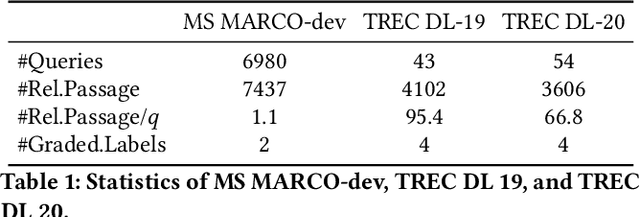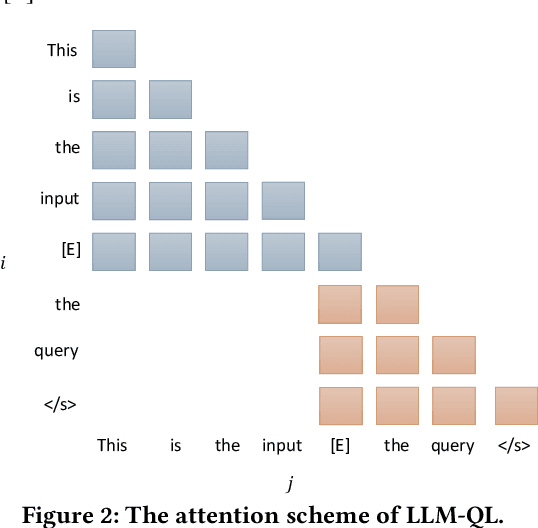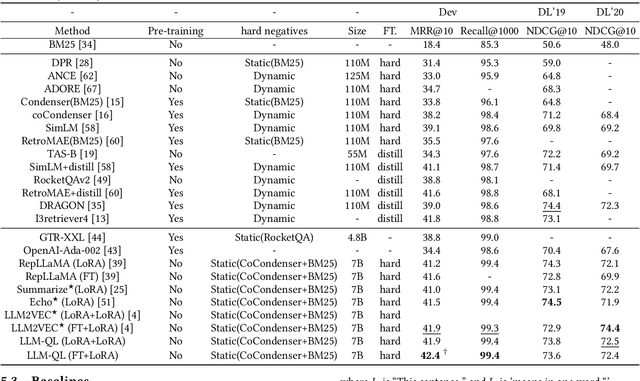Keping Bi
The Role of Parametric Injection-A Systematic Study of Parametric Retrieval-Augmented Generation
Oct 14, 2025



Abstract:Retrieval-augmented generation (RAG) enhances large language models (LLMs) by retrieving external documents. As an emerging form of RAG, parametric retrieval-augmented generation (PRAG) encodes documents as model parameters (i.e., LoRA modules) and injects these representations into the model during inference, enabling interaction between the LLM and documents at parametric level. Compared with directly placing documents in the input context, PRAG is more efficient and has the potential to offer deeper model-document interaction. Despite its growing attention, the mechanism underlying parametric injection remains poorly understood. In this work, we present a systematic study of PRAG to clarify the role of parametric injection, showing that parameterized documents capture only partial semantic information of documents, and relying on them alone yields inferior performance compared to interaction at text level. However, these parametric representations encode high-level document information that can enhance the model's understanding of documents within the input context. When combined parameterized documents with textual documents, the model can leverage relevant information more effectively and become more robust to noisy inputs, achieving better performance than either source alone. We recommend jointly using parameterized and textual documents and advocate for increasing the information content of parametric representations to advance PRAG.
Do LVLMs Know What They Know? A Systematic Study of Knowledge Boundary Perception in LVLMs
Aug 26, 2025Abstract:Large vision-language models (LVLMs) demonstrate strong visual question answering (VQA) capabilities but are shown to hallucinate. A reliable model should perceive its knowledge boundaries-knowing what it knows and what it does not. This paper investigates LVLMs' perception of their knowledge boundaries by evaluating three types of confidence signals: probabilistic confidence, answer consistency-based confidence, and verbalized confidence. Experiments on three LVLMs across three VQA datasets show that, although LVLMs possess a reasonable perception level, there is substantial room for improvement. Among the three confidences, probabilistic and consistency-based signals are more reliable indicators, while verbalized confidence often leads to overconfidence. To enhance LVLMs' perception, we adapt several established confidence calibration methods from Large Language Models (LLMs) and propose three effective methods. Additionally, we compare LVLMs with their LLM counterparts, finding that jointly processing visual and textual inputs decreases question-answering performance but reduces confidence, resulting in an improved perception level compared to LLMs.
How Do LLM-Generated Texts Impact Term-Based Retrieval Models?
Aug 25, 2025



Abstract:As more content generated by large language models (LLMs) floods into the Internet, information retrieval (IR) systems now face the challenge of distinguishing and handling a blend of human-authored and machine-generated texts. Recent studies suggest that neural retrievers may exhibit a preferential inclination toward LLM-generated content, while classic term-based retrievers like BM25 tend to favor human-written documents. This paper investigates the influence of LLM-generated content on term-based retrieval models, which are valued for their efficiency and robust generalization across domains. Our linguistic analysis reveals that LLM-generated texts exhibit smoother high-frequency and steeper low-frequency Zipf slopes, higher term specificity, and greater document-level diversity. These traits are aligned with LLMs being trained to optimize reader experience through diverse and precise expressions. Our study further explores whether term-based retrieval models demonstrate source bias, concluding that these models prioritize documents whose term distributions closely correspond to those of the queries, rather than displaying an inherent source bias. This work provides a foundation for understanding and addressing potential biases in term-based IR systems managing mixed-source content.
LifeIR at the NTCIR-18 Lifelog-6 Task
May 27, 2025Abstract:In recent years, sharing lifelogs recorded through wearable devices such as sports watches and GoPros, has gained significant popularity. Lifelogs involve various types of information, including images, videos, and GPS data, revealing users' lifestyles, dietary patterns, and physical activities. The Lifelog Semantic Access Task(LSAT) in the NTCIR-18 Lifelog-6 Challenge focuses on retrieving relevant images from a large scale of users' lifelogs based on textual queries describing an action or event. It serves users' need to find images about a scenario in the historical moments of their lifelogs. We propose a multi-stage pipeline for this task of searching images with texts, addressing various challenges in lifelog retrieval. Our pipeline includes: filtering blurred images, rewriting queries to make intents clearer, extending the candidate set based on events to include images with temporal connections, and reranking results using a multimodal large language model(MLLM) with stronger relevance judgment capabilities. The evaluation results of our submissions have shown the effectiveness of each stage and the entire pipeline.
How Knowledge Popularity Influences and Enhances LLM Knowledge Boundary Perception
May 23, 2025Abstract:Large language models (LLMs) often fail to recognize their knowledge boundaries, producing confident yet incorrect answers. In this paper, we investigate how knowledge popularity affects LLMs' ability to perceive their knowledge boundaries. Focusing on entity-centric factual question answering (QA), we quantify knowledge popularity from three perspectives: the popularity of entities in the question, the popularity of entities in the answer, and relation popularity, defined as their co-occurrence frequency. Experiments on three representative datasets containing knowledge with varying popularity show that LLMs exhibit better QA performance, higher confidence, and more accurate perception on more popular knowledge, with relation popularity having the strongest correlation. Cause knowledge popularity shows strong correlation with LLMs' QA performance, we propose to leverage these signals for confidence calibration. This improves the accuracy of answer correctness prediction by an average of 5.24% across all models and datasets. Furthermore, we explore prompting LLMs to estimate popularity without external corpora, which yields a viable alternative.
Bridging Queries and Tables through Entities in Table Retrieval
Apr 09, 2025Abstract:Table retrieval is essential for accessing information stored in structured tabular formats; however, it remains less explored than text retrieval. The content of the table primarily consists of phrases and words, which include a large number of entities, such as time, locations, persons, and organizations. Entities are well-studied in the context of text retrieval, but there is a noticeable lack of research on their applications in table retrieval. In this work, we explore how to leverage entities in tables to improve retrieval performance. First, we investigate the important role of entities in table retrieval from a statistical perspective and propose an entity-enhanced training framework. Subsequently, we use the type of entities to highlight entities instead of introducing an external knowledge base. Moreover, we design an interaction paradigm based on entity representations. Our proposed framework is plug-and-play and flexible, making it easy to integrate into existing table retriever training processes. Empirical results on two table retrieval benchmarks, NQ-TABLES and OTT-QA, show that our proposed framework is both simple and effective in enhancing existing retrievers. We also conduct extensive analyses to confirm the efficacy of different components. Overall, our work provides a promising direction for elevating table retrieval, enlightening future research in this area.
Leveraging LLMs for Utility-Focused Annotation: Reducing Manual Effort for Retrieval and RAG
Apr 08, 2025Abstract:Retrieval models typically rely on costly human-labeled query-document relevance annotations for training and evaluation. To reduce this cost and leverage the potential of Large Language Models (LLMs) in relevance judgments, we aim to explore whether LLM-generated annotations can effectively replace human annotations in training retrieval models. Retrieval usually emphasizes relevance, which indicates "topic-relatedness" of a document to a query, while in RAG, the value of a document (or utility) depends on how it contributes to answer generation. Recognizing this mismatch, some researchers use LLM performance on downstream tasks with documents as labels, but this approach requires manual answers for specific tasks, leading to high costs and limited generalization. In another line of work, prompting LLMs to select useful documents as RAG references eliminates the need for human annotation and is not task-specific. If we leverage LLMs' utility judgments to annotate retrieval data, we may retain cross-task generalization without human annotation in large-scale corpora. Therefore, we investigate utility-focused annotation via LLMs for large-scale retriever training data across both in-domain and out-of-domain settings on the retrieval and RAG tasks. To reduce the impact of low-quality positives labeled by LLMs, we design a novel loss function, i.e., Disj-InfoNCE. Our experiments reveal that: (1) Retrievers trained on utility-focused annotations significantly outperform those trained on human annotations in the out-of-domain setting on both tasks, demonstrating superior generalization capabilities. (2) LLM annotation does not replace human annotation in the in-domain setting. However, incorporating just 20% human-annotated data enables retrievers trained with utility-focused annotations to match the performance of models trained entirely with human annotations.
Unleashing the Power of LLMs in Dense Retrieval with Query Likelihood Modeling
Apr 07, 2025



Abstract:Dense retrieval is a crucial task in Information Retrieval (IR) and is the foundation for downstream tasks such as re-ranking. Recently, large language models (LLMs) have shown compelling semantic understanding capabilities and are appealing to researchers studying dense retrieval. LLMs, as decoder-style generative models, are competent at language generation while falling short on modeling global information due to the lack of attention to tokens afterward. Inspired by the classical word-based language modeling approach for IR, i.e., the query likelihood (QL) model, we seek to sufficiently utilize LLMs' generative ability by QL maximization. However, instead of ranking documents with QL estimation, we introduce an auxiliary task of QL maximization to yield a better backbone for contrastively learning a discriminative retriever. We name our model as LLM-QL. To condense global document semantics to a single vector during QL modeling, LLM-QL has two major components, Attention Stop (AS) and Input Corruption (IC). AS stops the attention of predictive tokens to previous tokens until the ending token of the document. IC masks a portion of tokens in the input documents during prediction. Experiments on MSMARCO show that LLM-QL can achieve significantly better performance than other LLM-based retrievers and using QL estimated by LLM-QL for ranking outperforms word-based QL by a large margin.
Tailoring Table Retrieval from a Field-aware Hybrid Matching Perspective
Mar 04, 2025Abstract:Table retrieval, essential for accessing information through tabular data, is less explored compared to text retrieval. The row/column structure and distinct fields of tables (including titles, headers, and cells) present unique challenges. For example, different table fields have varying matching preferences: cells may favor finer-grained (word/phrase level) matching over broader (sentence/passage level) matching due to their fragmented and detailed nature, unlike titles. This necessitates a table-specific retriever to accommodate the various matching needs of each table field. Therefore, we introduce a Table-tailored HYbrid Matching rEtriever (THYME), which approaches table retrieval from a field-aware hybrid matching perspective. Empirical results on two table retrieval benchmarks, NQ-TABLES and OTT-QA, show that THYME significantly outperforms state-of-the-art baselines. Comprehensive analyses confirm the differing matching preferences across table fields and validate the design of THYME.
CLIPure: Purification in Latent Space via CLIP for Adversarially Robust Zero-Shot Classification
Feb 25, 2025Abstract:In this paper, we aim to build an adversarially robust zero-shot image classifier. We ground our work on CLIP, a vision-language pre-trained encoder model that can perform zero-shot classification by matching an image with text prompts ``a photo of a <class-name>.''. Purification is the path we choose since it does not require adversarial training on specific attack types and thus can cope with any foreseen attacks. We then formulate purification risk as the KL divergence between the joint distributions of the purification process of denoising the adversarial samples and the attack process of adding perturbations to benign samples, through bidirectional Stochastic Differential Equations (SDEs). The final derived results inspire us to explore purification in the multi-modal latent space of CLIP. We propose two variants for our CLIPure approach: CLIPure-Diff which models the likelihood of images' latent vectors with the DiffusionPrior module in DaLLE-2 (modeling the generation process of CLIP's latent vectors), and CLIPure-Cos which models the likelihood with the cosine similarity between the embeddings of an image and ``a photo of a.''. As far as we know, CLIPure is the first purification method in multi-modal latent space and CLIPure-Cos is the first purification method that is not based on generative models, which substantially improves defense efficiency. We conducted extensive experiments on CIFAR-10, ImageNet, and 13 datasets that previous CLIP-based defense methods used for evaluating zero-shot classification robustness. Results show that CLIPure boosts the SOTA robustness by a large margin, e.g., from 71.7% to 91.1% on CIFAR10, from 59.6% to 72.6% on ImageNet, and 108% relative improvements of average robustness on the 13 datasets over previous SOTA. The code is available at https://github.com/TMLResearchGroup-CAS/CLIPure.
 Add to Chrome
Add to Chrome Add to Firefox
Add to Firefox Add to Edge
Add to Edge